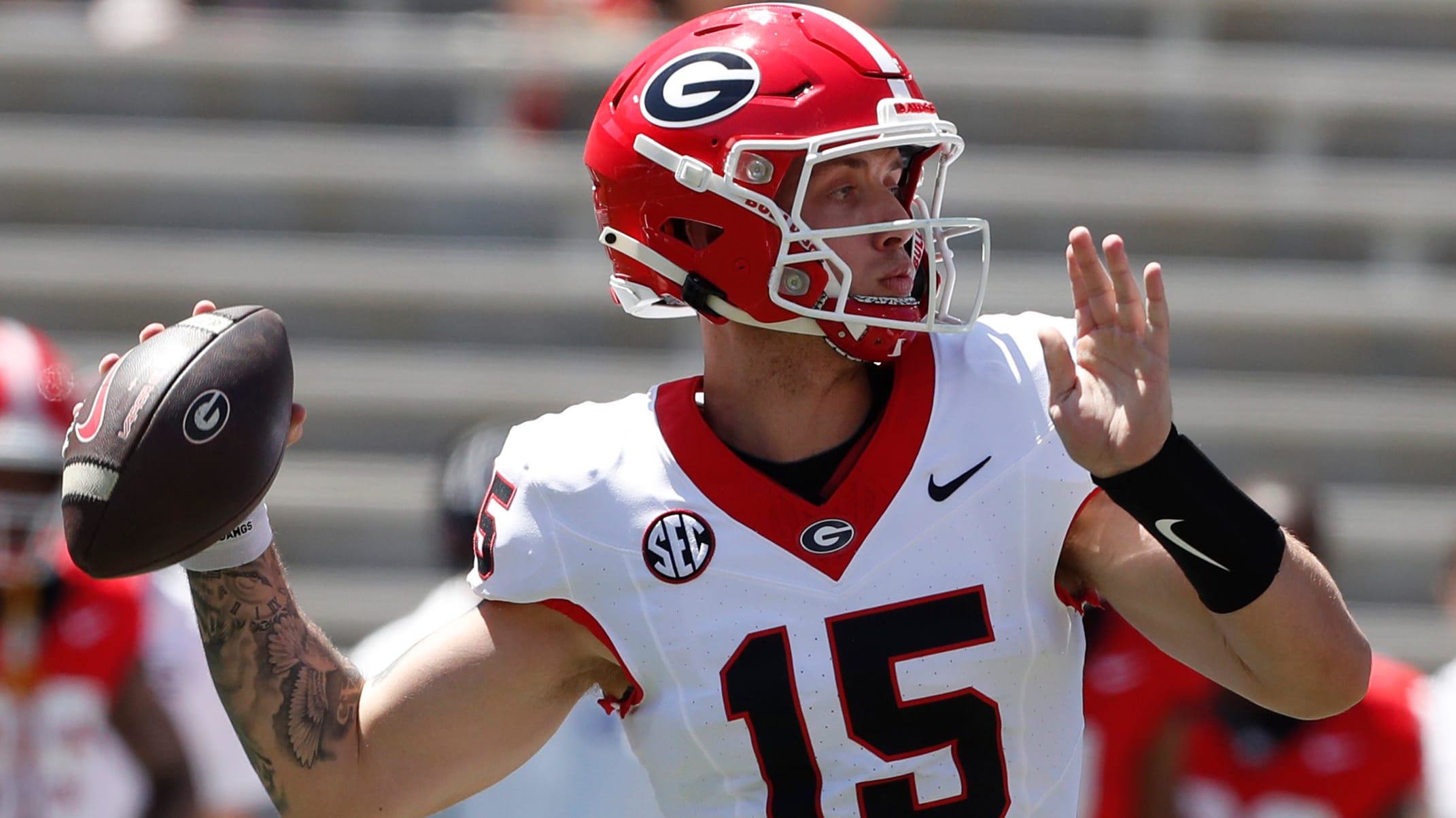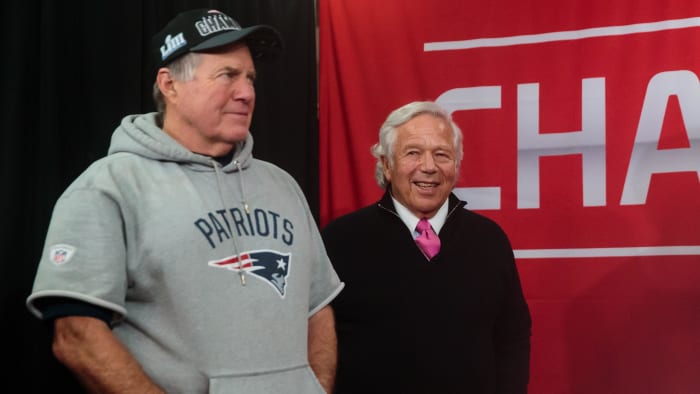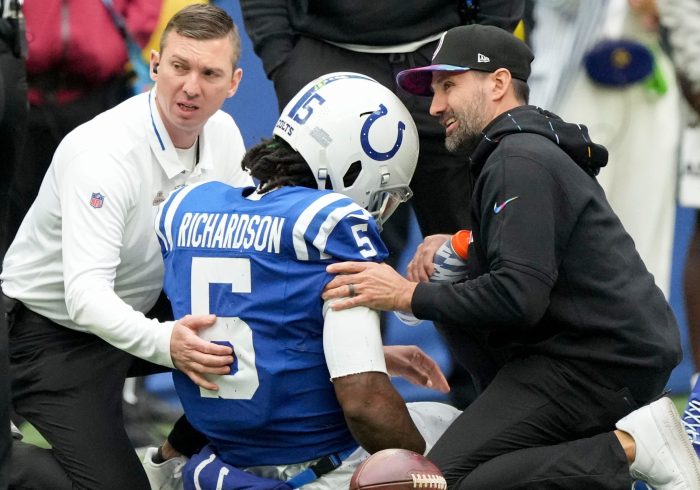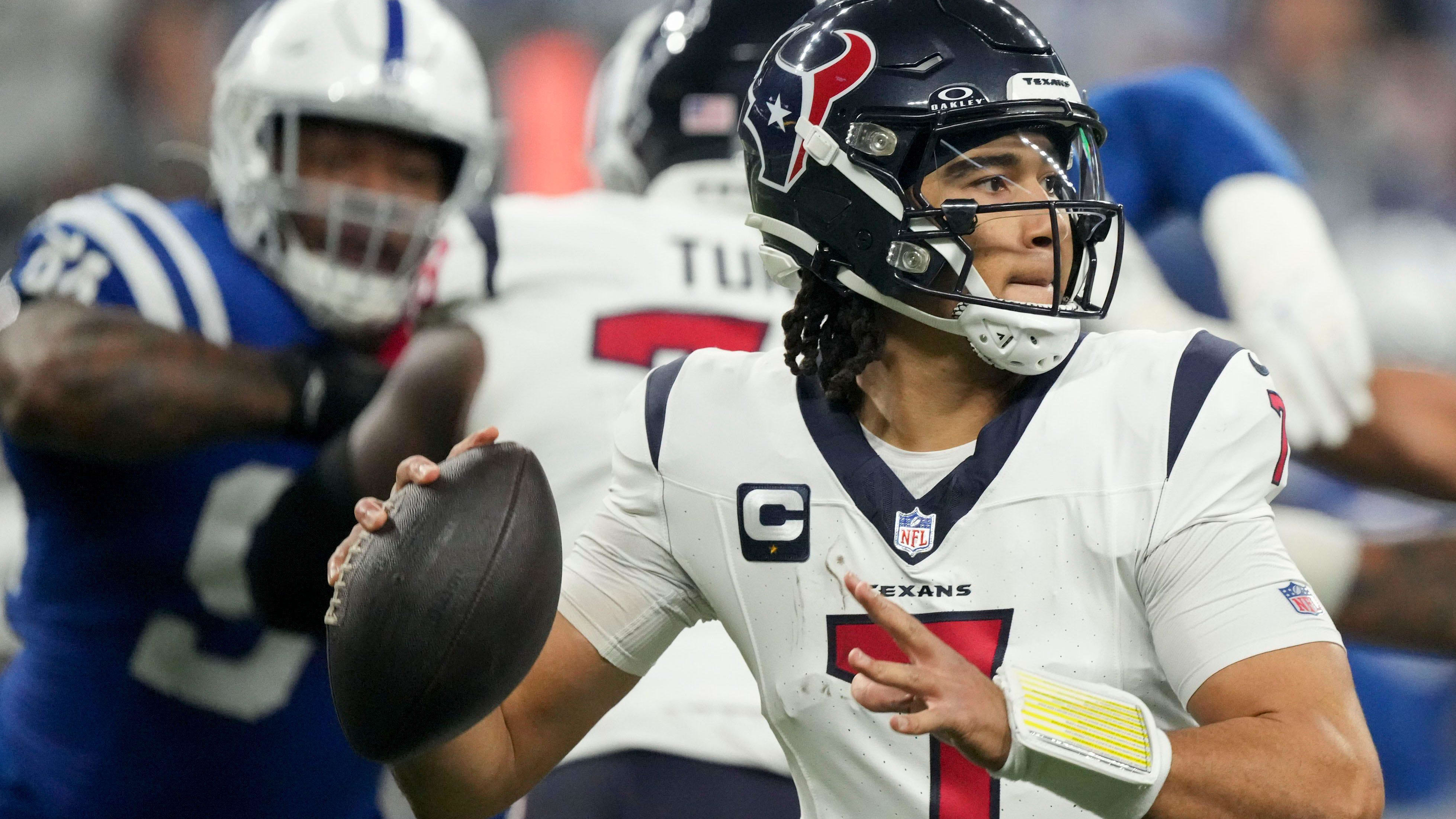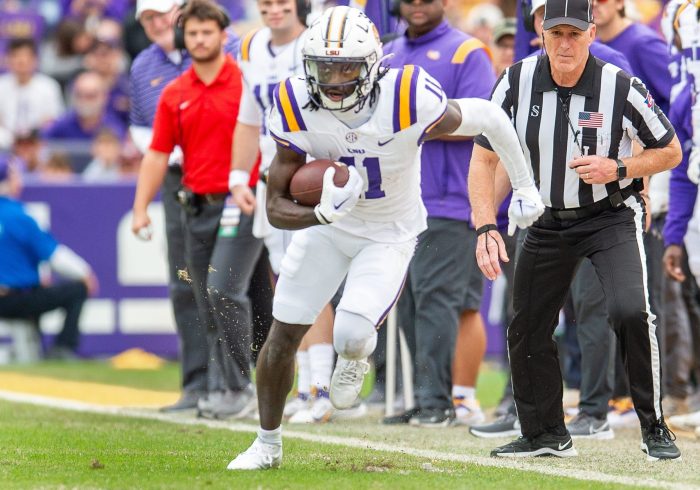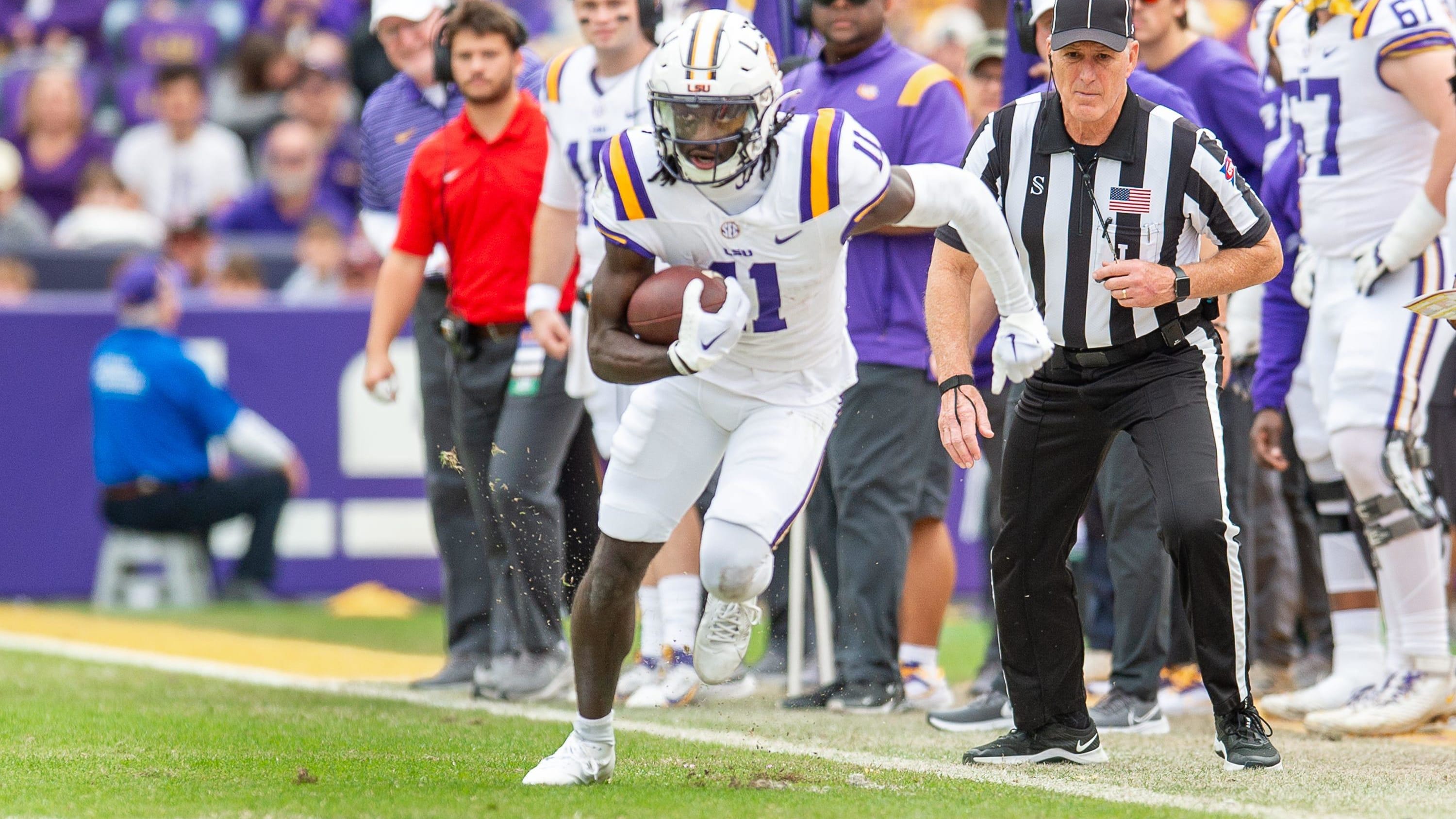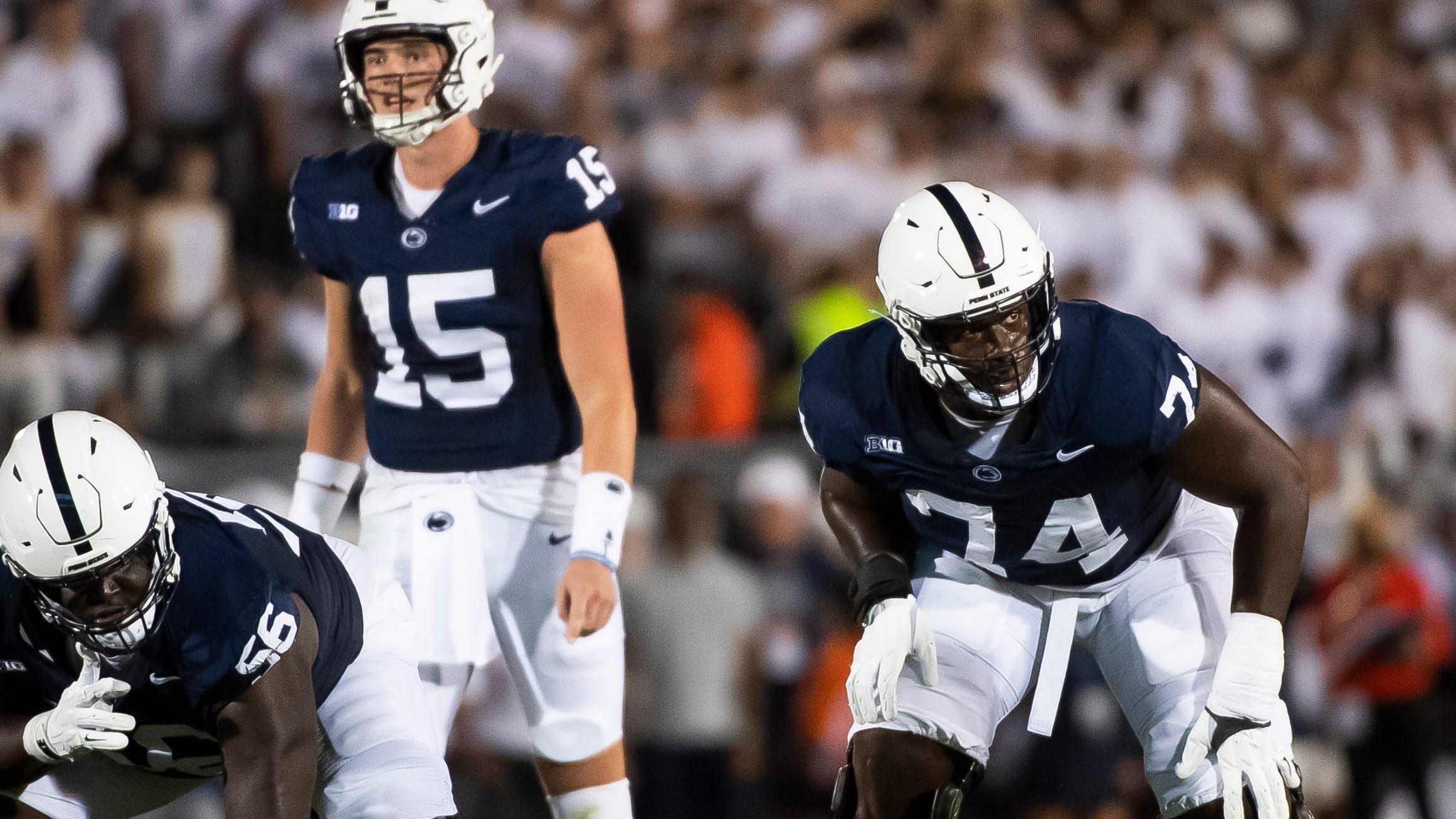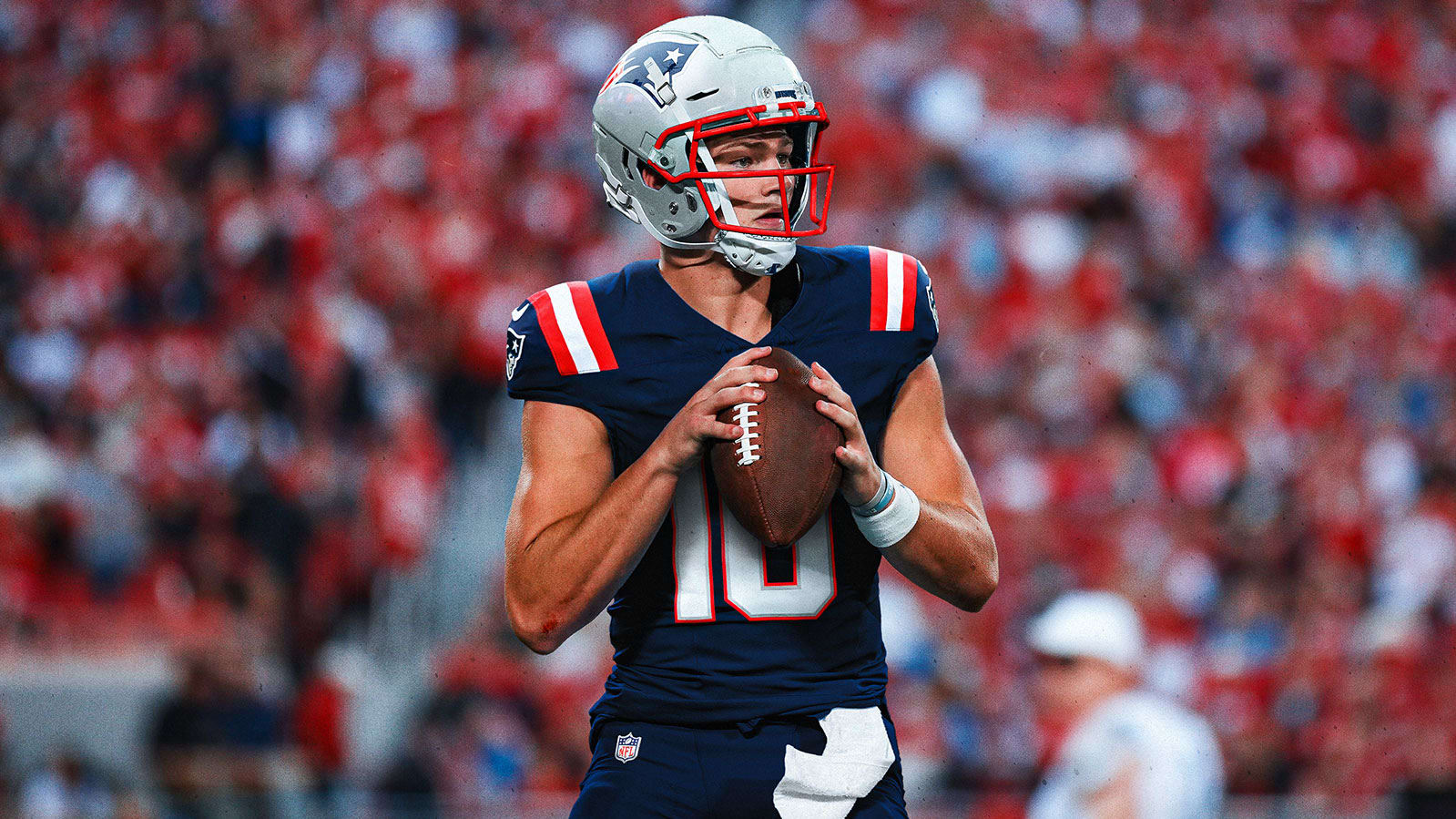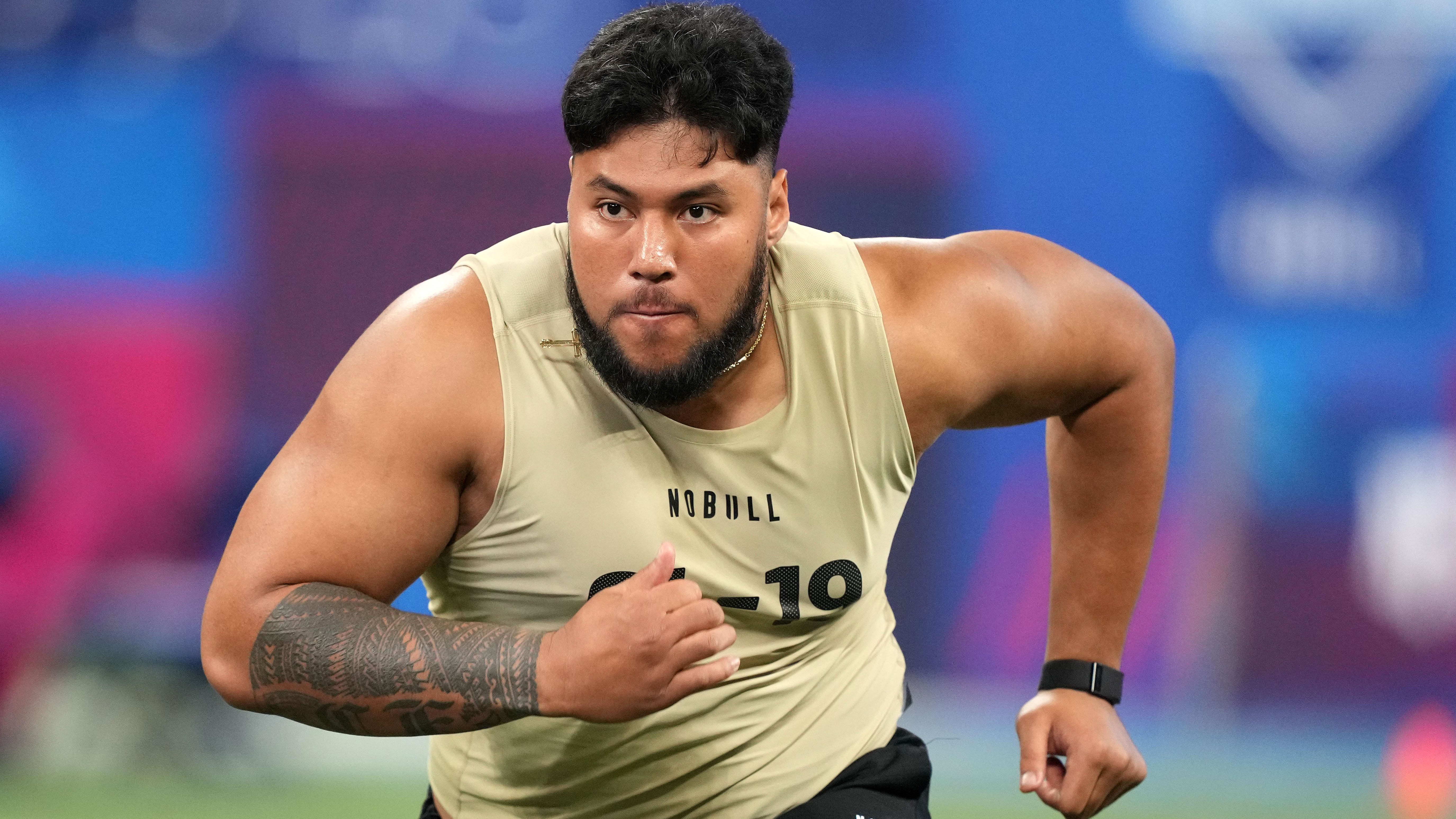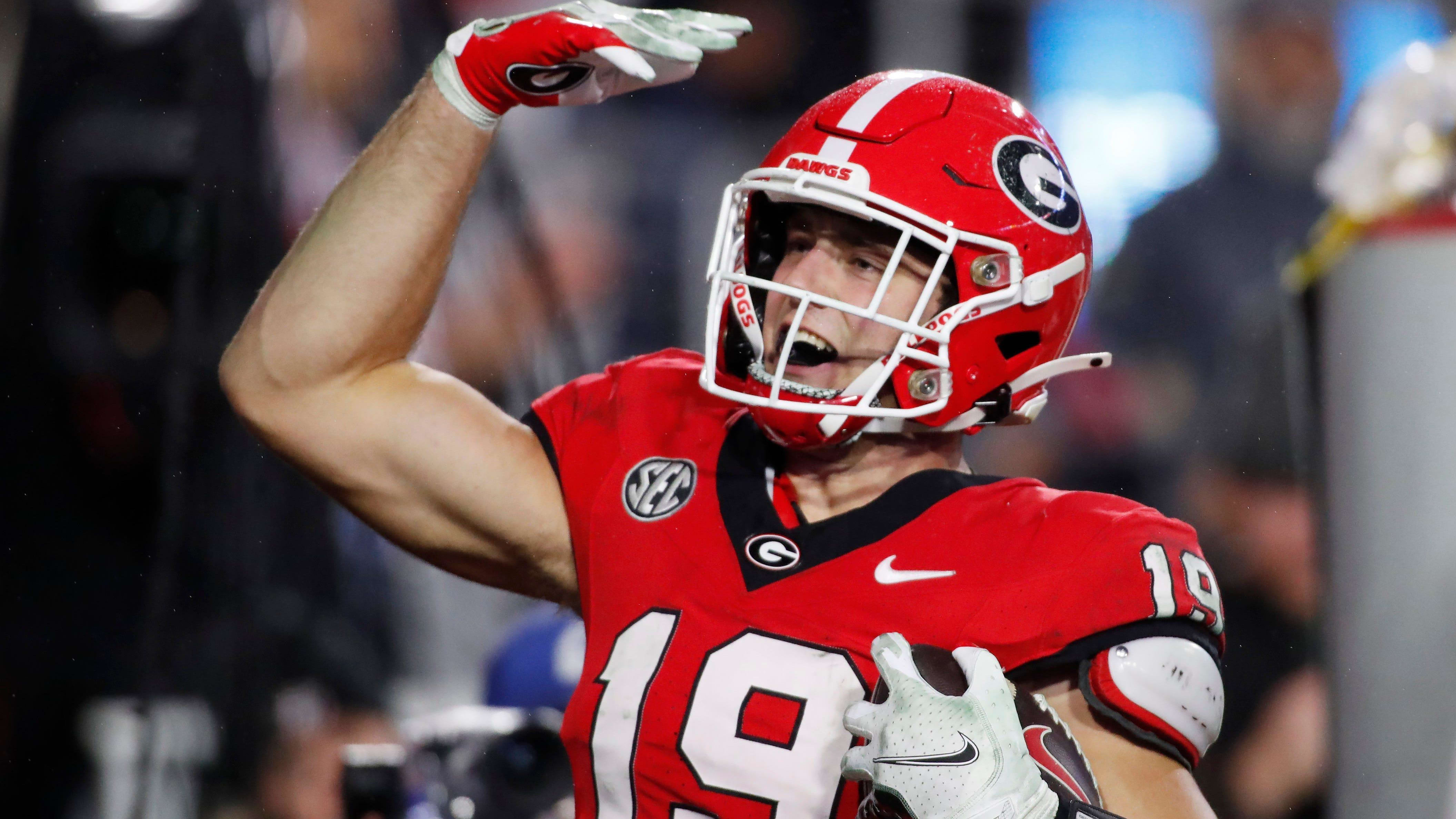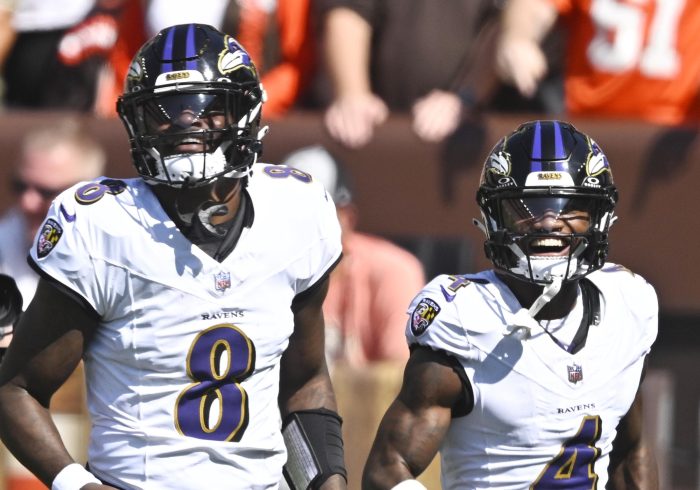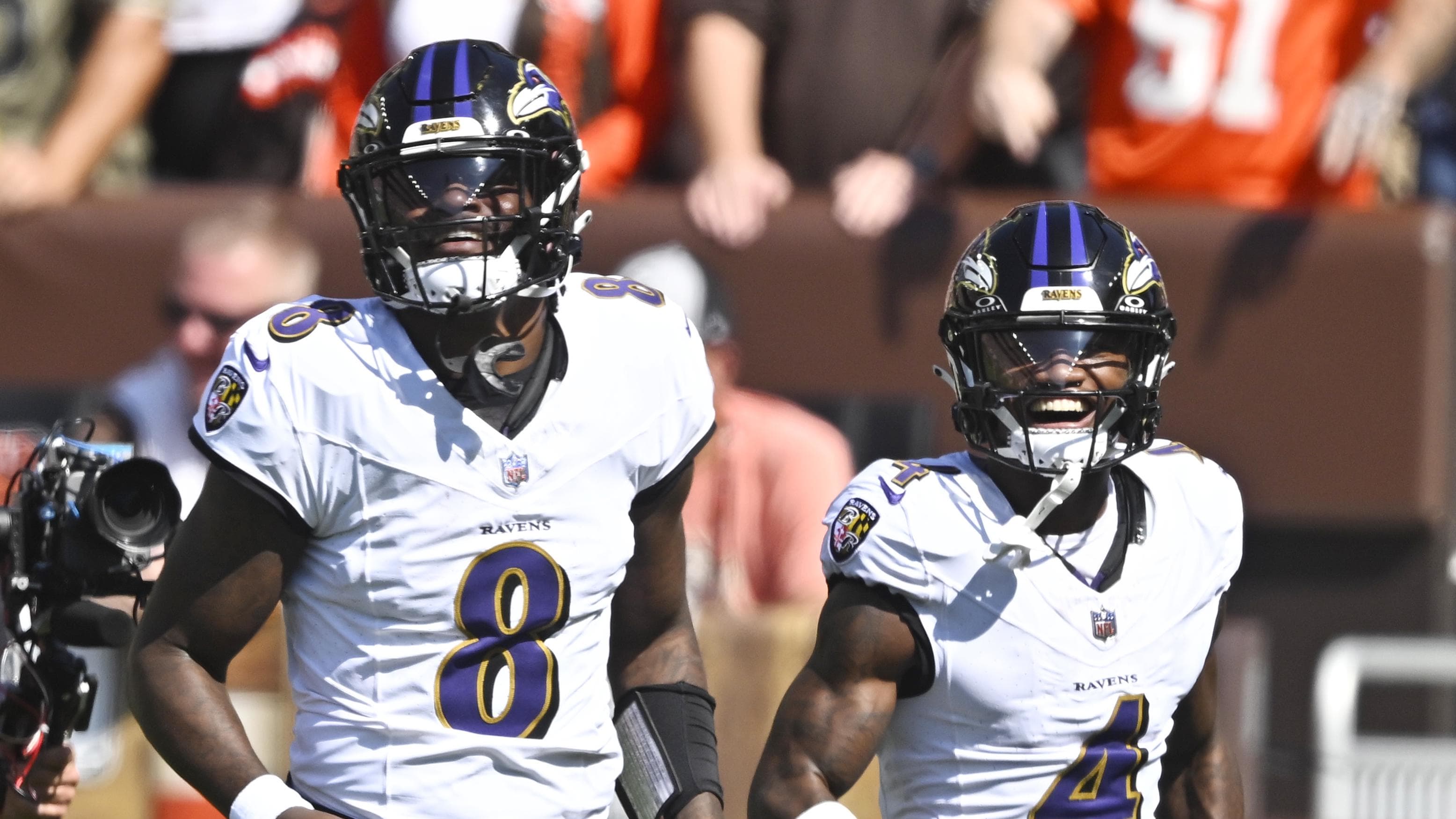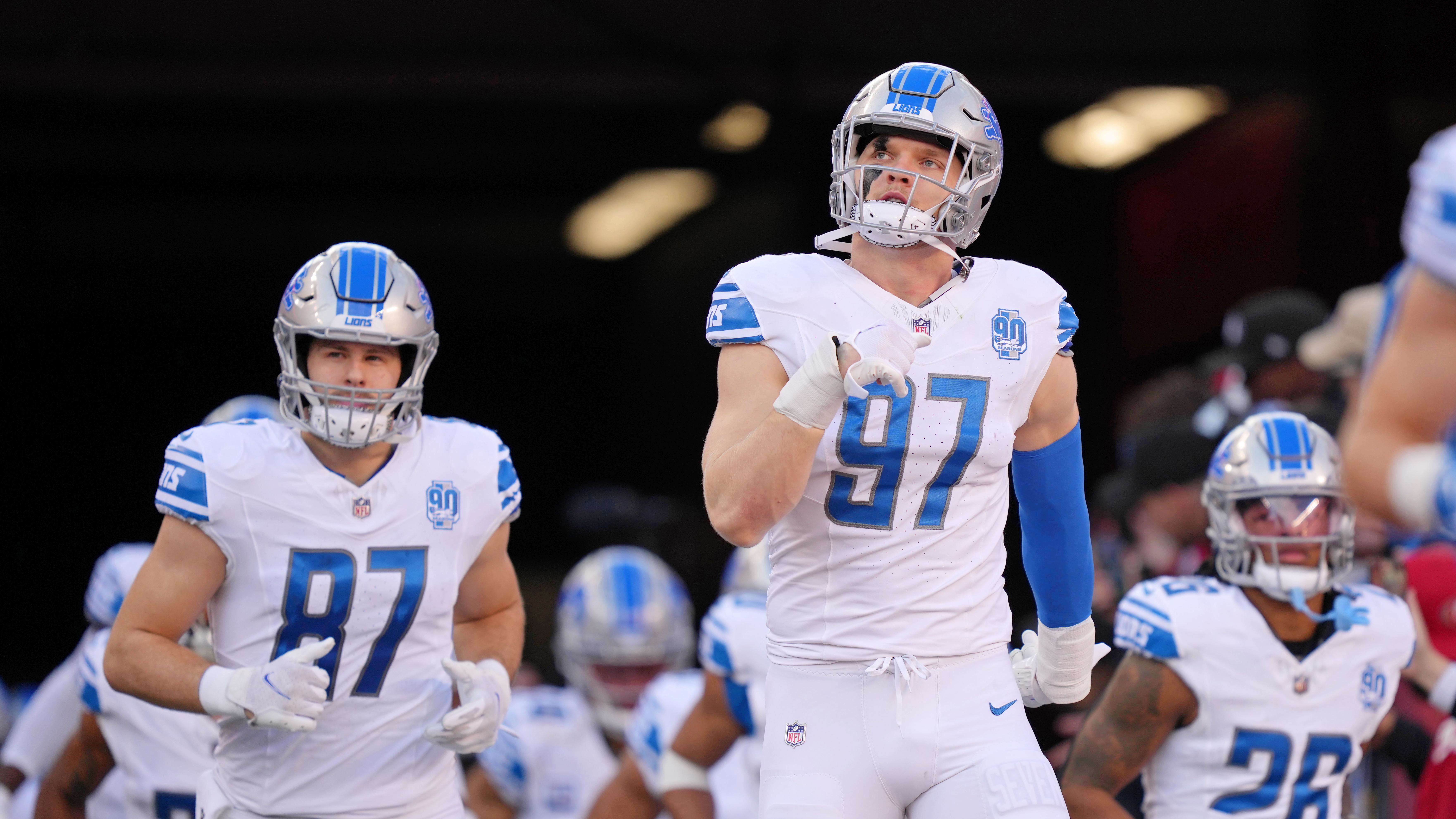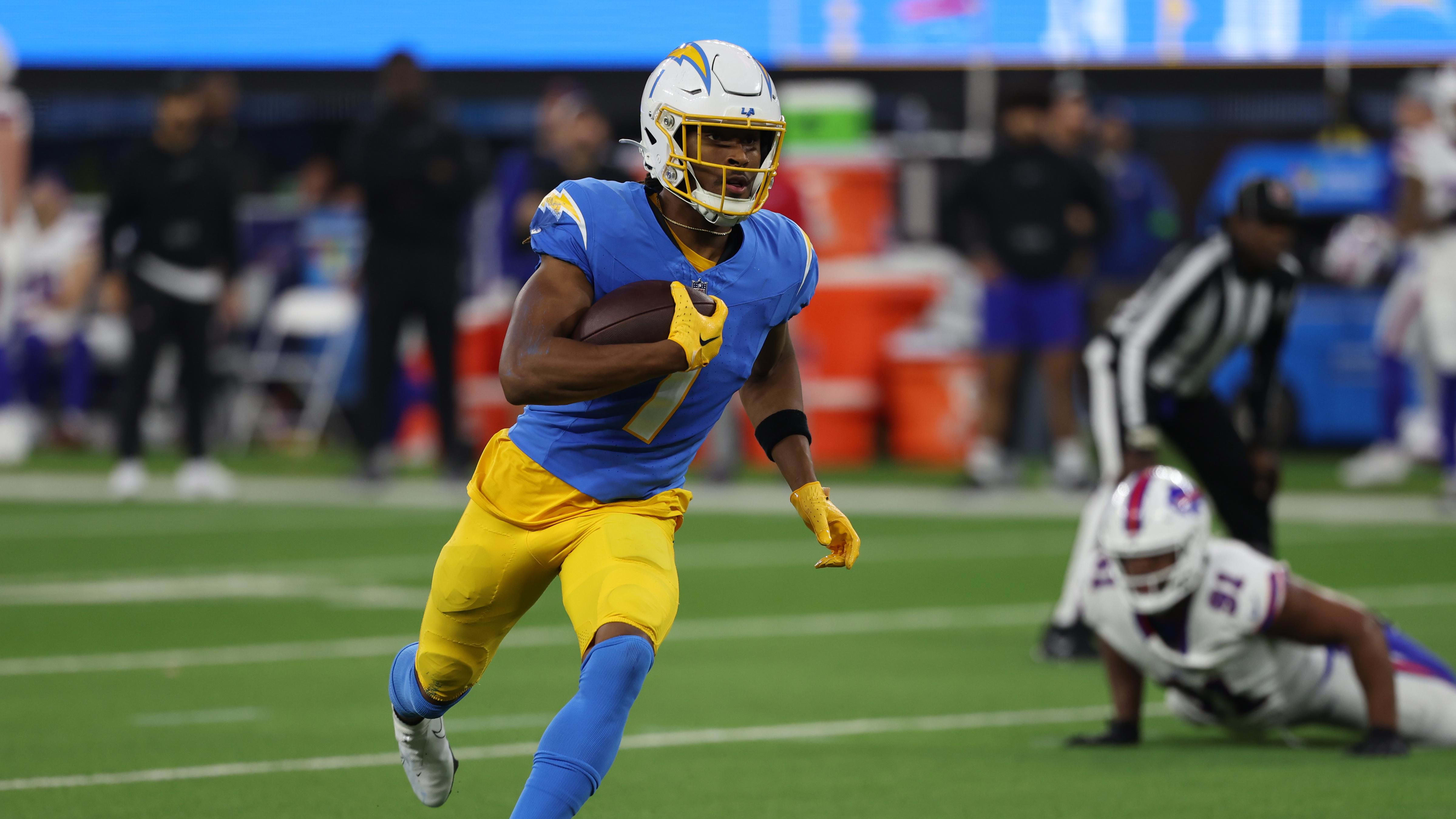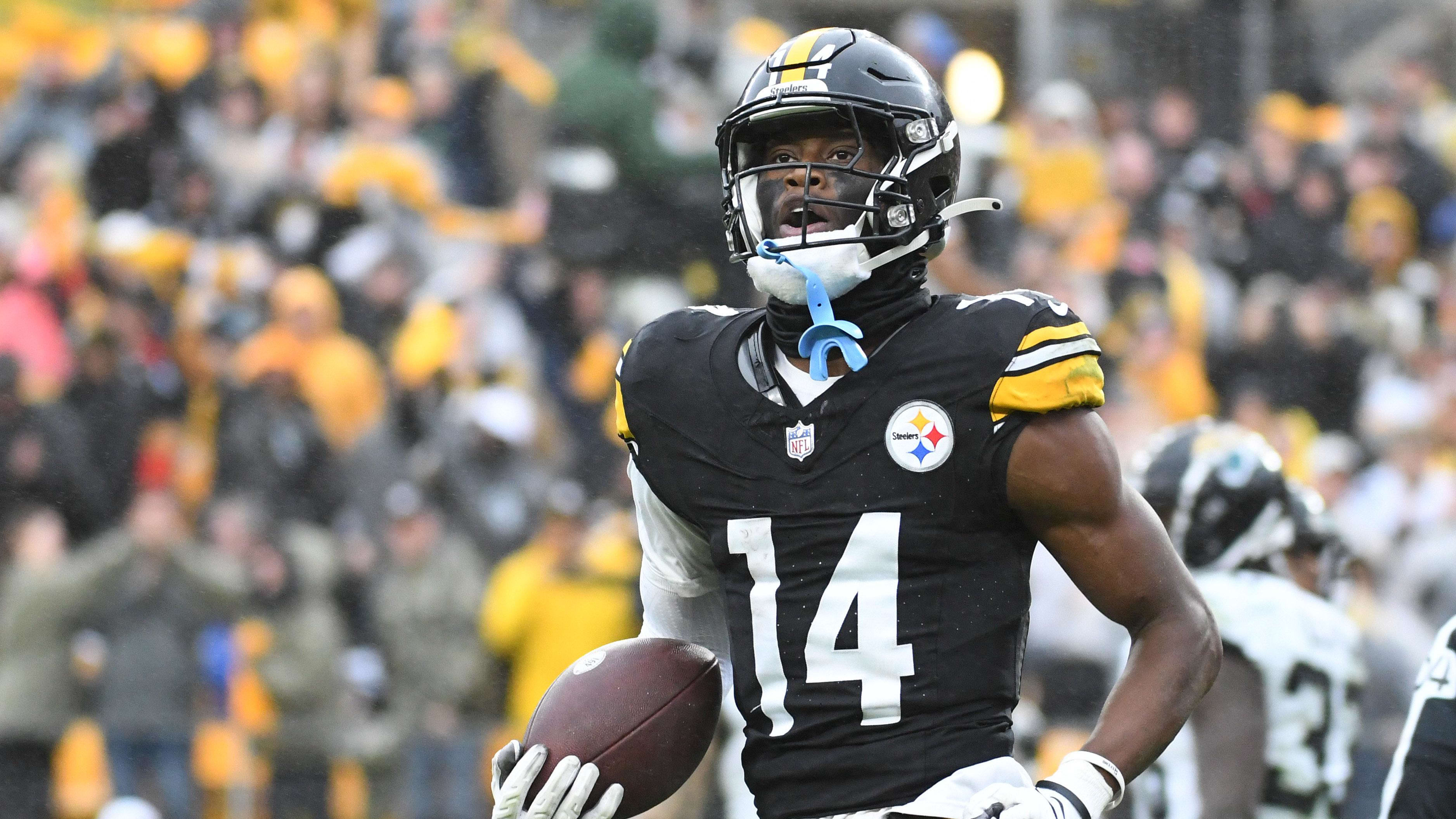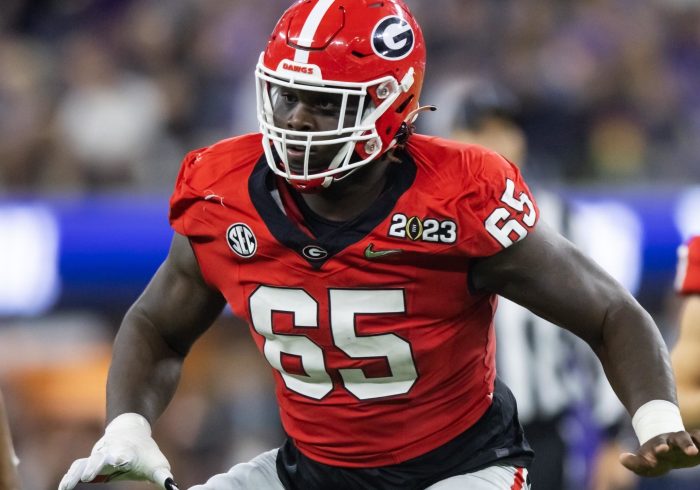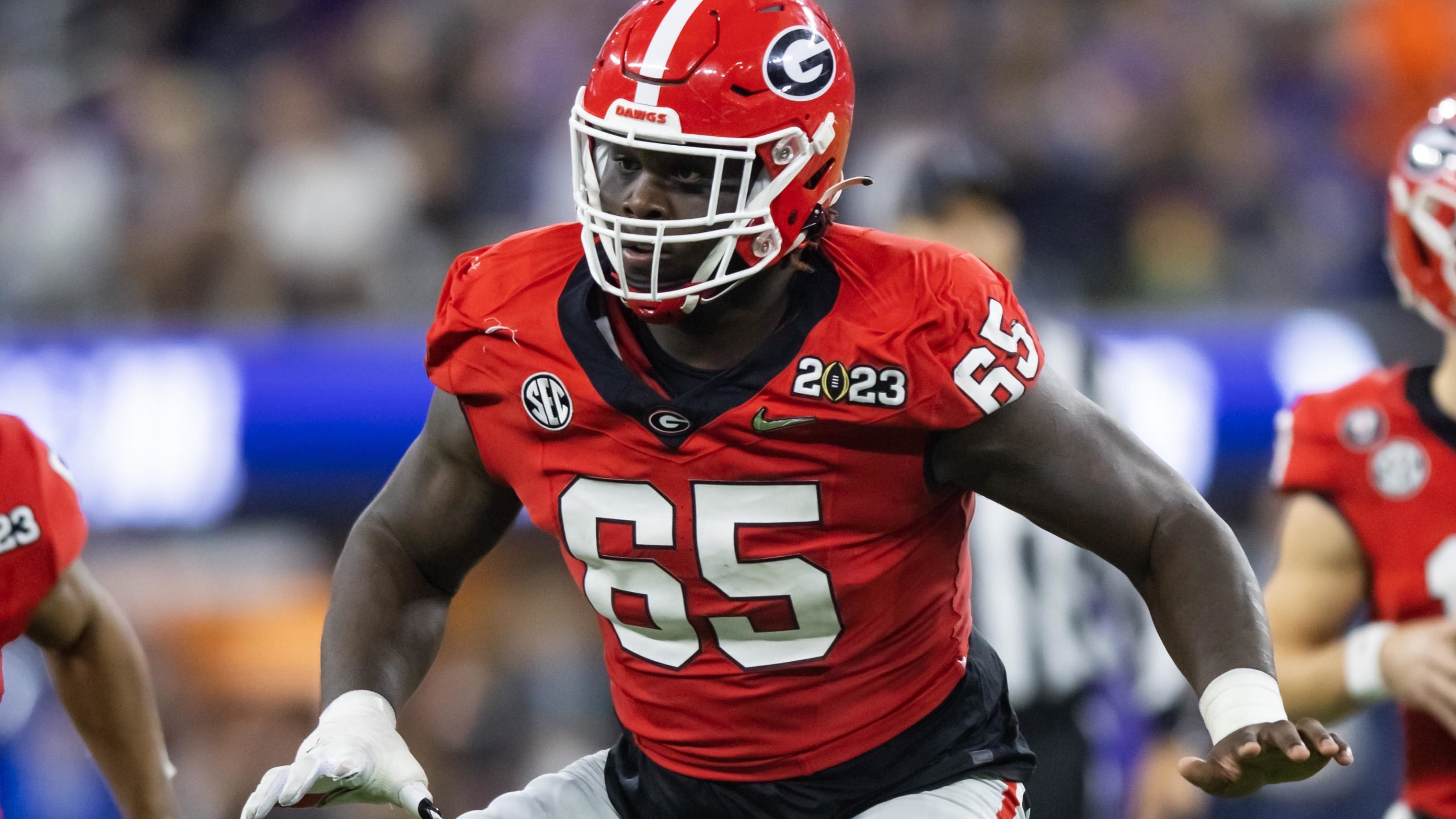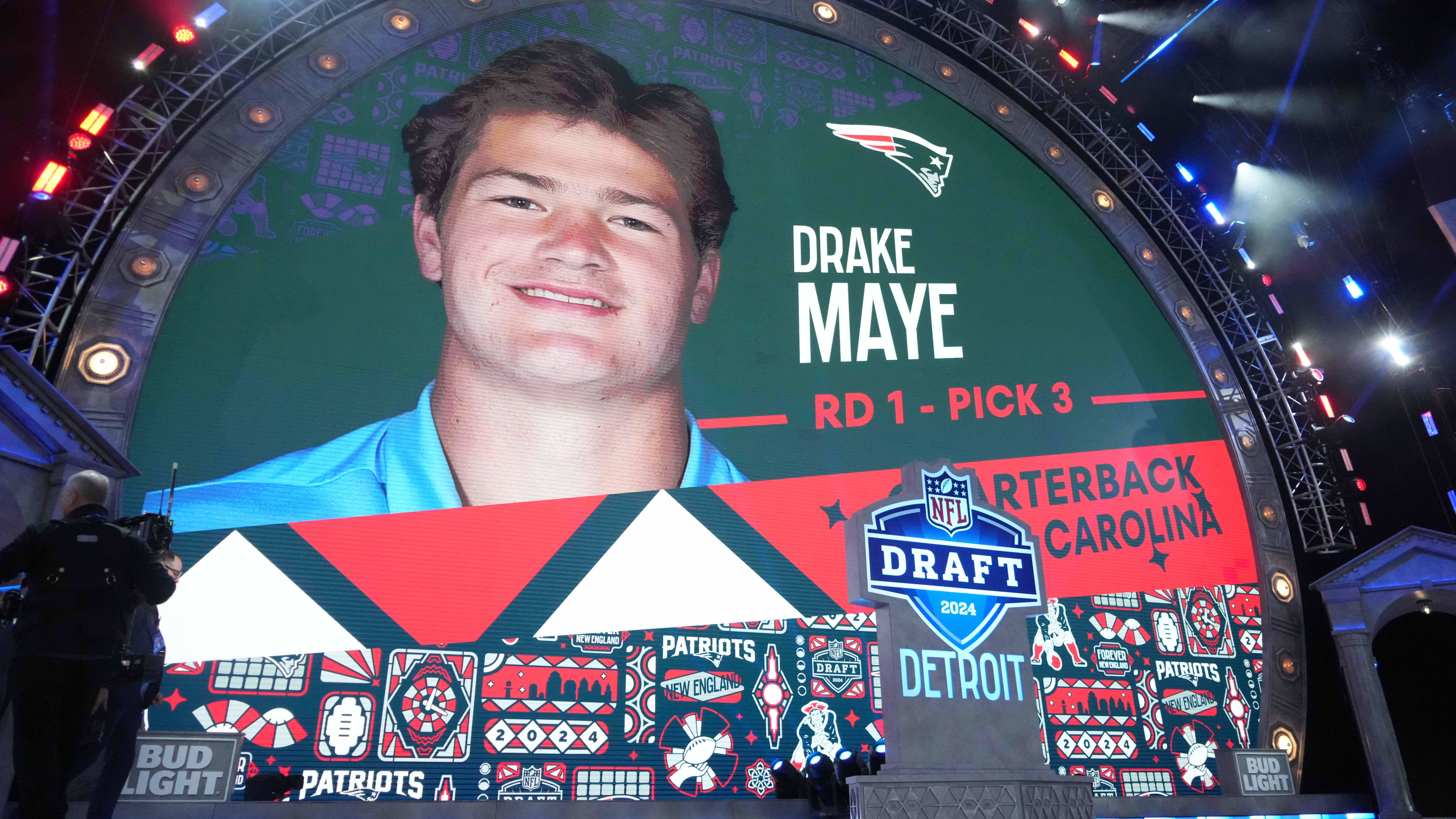The Patriots’ Post–Bill Belichick Front Office Is Finally Taking Shape
We’re into the month of the schedule being released and spring practices (aka OTAs) starting, so let’s get into it …
• The New England Patriots’ expectation, I believe, is coming closer to reality, with the team honing in on finalizing its football operations structure for 2024.
With the blessing of the league office, New England punted on hiring a “primary football executive” in January. That role had been filled by coach Bill Belichick, was vacated upon his firing and wasn’t conferred over to Belichick’s replacement on the coaching side, Jerod Mayo. The idea from ownership here, as we explained in January, was to do a thorough vetting of the football operation as it stood, before making big-picture decisions post-draft.
Why? Well, because the Krafts felt like, to a large degree, Belichick’s shadow had been cast for years over capable people in the scouting department. From the selection of N’Keal Harry over Deebo Samuel and A.J. Brown in the first round in 2019, to a mass exodus of personnel folks right around that time, it was apparent to ownership that Belichick’s decisions didn’t always jibe with the evaluations of his scouts.
So Robert and Jonathan Kraft resolved to give the guys in-house, whom they liked, a chance to show what they had without that shadow enveloping them. They moved Eliot Wolf—son of Hall of Fame executive Ron Wolf, and with experience as the No. 2 with two different franchises—into the top role, leapfrogging him over director of player personnel Matt Groh with the belief that Wolf was best prepared and suited for a GM-type of job.
As such, Wolf got a three-month audition to show what he had, with Groh and Pat Stewart, who came up in the Patriots’ system, and was a top exec in Carolina under Matt Rhule and Scott Fitterer, as his top lieutenants. And the Krafts did leave a breadcrumb out there for anyone who wanted it, authorizing the hire of Alonzo Highsmith, who came up with Wolf in Green Bay, and went with him to work for John Dorsey in Cleveland.
And now, all signs are pointing toward Wolf landing the job in New England, to the degree where the Patriots have been turned down by prospective candidates with other teams that they’ve sought to interview (such as Buffalo’s Terrance Gray and Cincinnati’s Trey Brown), with those candidates leery that this is a done deal.
The truth being that it probably is.
• The one other detail on that to watch is how they handle the new primary football executive’s title. This will be Kraft’s 33rd season owning the Patriots, and he’s never had a general manager in title. Bobby Grier, Scott Pioli, Nick Caserio, Dave Ziegler and Matt Groh all entered the top scouting role under the title of director of player personnel. Grier and Pioli eventually ascended to vice president of the player personnel.
The last Patriots GM was Patrick Sullivan, the son of then owner Billy Sullivan. He held the title from 1983 to ’91.
Now, there would be a very real and functional reason to give someone like Wolf the title. Doing it would allow for the team to hire an assistant GM, and that title allows you to poach from another team without the other team having to let such a person out of their contract. So theoretically, the Patriots could use the GM interviews to search for an assistant GM, then use that assistant GM title to pull the candidate away from another organization.
If the Patriots were to do something like that, it’d be smart to look toward the Packers’ organization, and maybe someone like director of pro scouting Richmond Williams, to find guys who’d fit under Wolf.
• Great news from Cincinnati, where the Bengals released video of Joe Burrow, back from surgery on his throwing wrist, spinning the ball as he normally would (albeit with a sleeve over his right arm) inside the team’s practice bubble. He also told the team website that the timetable has allowed for him to have a relatively normal offseason, since he wouldn’t be throwing in earnest until OTAs, which is when he usually ramps things up anyway.
My understanding is that, through two days of throwing on-site, his velocity and deep range have been normal, and he’s in great shape, while there is a little rust and the team is monitoring his workload. I’d expect the Bengals to be careful with their franchise quarterback (with rest days, etc.), especially since he somehow still hasn’t had a full and normal offseason as a pro. Burrow lost time to ACL rehab in 2021, appendicitis in ’22 and a calf injury last summer.
• Every year, there’s a lot of noise in May over who the top quarterbacks will be in the following year’s draft. This year is no different. And sometimes, it can be tough to decipher what’s real, and what’s not (remember Spencer Rattler’s “stock” in the summer of 2021).
So I’d just say looking at the names, the guy I’ve heard the most real, genuine, this-guy-could-make it buzz in a class that looks just so-so right now is Georgia's Carson Beck. Scouts visiting Athens in November were alerted to the reality that he was almost certainly returning to school for a fourth season. But at that point, there was a thought that he could be taken in the top half of the first round in 2024. Making the idea of that real for ’25.
Obviously, we’ll be talking plenty about guys such as Colorado’s Shedeur Sanders and Texas’s Quinn Ewers too.
• The addition of Tyler Boyd to the Titans’ roster is a sharp one for Brian Callahan, who was together with the veteran receiver in Cincinnati. Every new head coach is well-served to have people who know the program, and the coach’s expectations, coming in. And until now, Callahan had only Chidobe Awuzie coming over from the Bengals with him.
That Boyd’s a pro’s pro only adds to the logic of the signing.
• It’s worth mentioning here, given the battle royale that’s ensued between college all-star games over the past few years, that the Senior Bowl remains at the top of the heap. Among the players who at least participated in practices at the various all-star games, the Senior Bowl had 25 of the 26 guys taken in the first two rounds (including all 10 first-rounders), and a 45-5-1 edge over the East/West Shrine Bowl and Hula Bowl, respectively, over the first four rounds.
Also, the one Hula Bowler taken in the first four rounds, Boston College CB and Arizona Cardinals third-rounder Elijah Jones, was a late injury add to the Senior Bowl, meaning he’d been high on their list. So … good job by Jim Nagy and the folks in Mobile on all of that.
• The Panthers added Rashaad Penny to a crowded running back group that already has Miles Sanders and Chuba Hubbard, which, rightfully, raised some question on the readiness of second-round pick Jonathon Brooks, who tore his ACL in November as a Texas junior.
My understanding is that Brooks will be held out of spring drills, with the expectation that he’s cleared on July 1, and starts training camp on a pitch count. That should give him a chance to play from the start of his rookie year, though he’ll have fewer early opportunities to make an impression on new coach Dave Canales and his staff. (It is worth noting that Penny was with Canales in Seattle for the first five years of his career.)
• Keep an eye on Chiefs fourth-rounder Jared Wiley. Some saw him as a top guy in the tight end group behind Brock Bowers in his class, and he turned some heads at the team’s rookie minicamp (his raw size and hands stood out). Plus, he’ll get to learn from a pretty good one.
• Not for nothing, I think the Vikings are pretty comfortable with Sam Darnold playing quarterback, which gives them flexibility with J.J. McCarthy. I’d also expect that Kevin O’Connell will have a detailed set of markers for McCarthy to hit as he tries to compete to become the starter. So if he does, that’s great news for the team. And if he hits the normal rookie speedbumps, that’s O.K. too, with Darnold in tow.
• Justin Simmons is one current free agent I’d be calling if I were a team.

